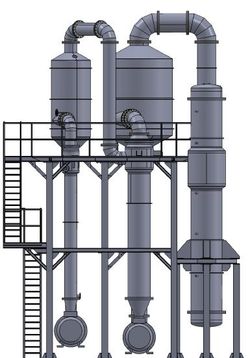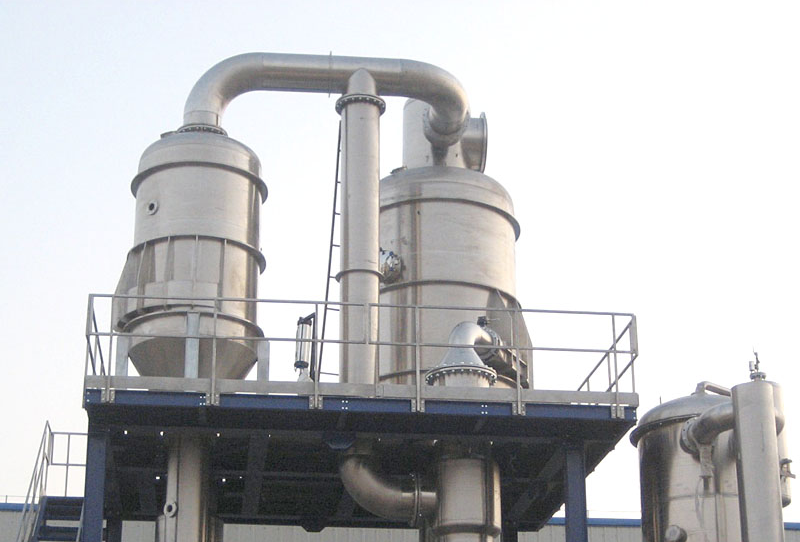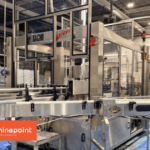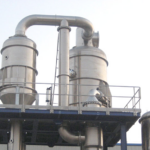To reduce the transport costs for worldwide distribution, juices and sauces are usually concentrated. Concentration consists of reducing water content in a liquid or solid. This water is later on restituted.
MachinePoint supplies various types of evaporators depending on the product that needs to be evaporated. We can say there are mainly two types of products, the ones with low pulp contents (less than 2%) such as orange juice, pineapple juice, grape juice, etc. And the ones with high solid content such as mango, peach, strawberry, tomato, etc.
Evaporating fruit and vegetable juices is challenging as viscosity increases significantly as they get concentrated.
Falling film evaporators
These types of evaporators are used to concentrate liquids with low solid content and heat sensitive components.
The liquid enters the evaporator at the head and then a thin film of the product to be evaporated flows down the side of the heat exchanging tubes. Steam condenses on the outside of the tubes supplying the required energy to the inside of the tubes.
Another system is the multi-effect evaporator; where the pressure is incrementally lowered in each stage, thus pushing the boiling point lower gradually. This one can have between one and five different effects.
Vapor recompression evaporators are used when we want to achieve maximum energy efficiency.
Forced circulation evaporator
This evaporator is designed for the evaporation of liquids with a high solid content, high viscosity, or a tendency to spoil. They are also used for crystallizers.
The system is often used as a finishing evaporator for the concentration of liquids to a high solid content, followed by a low solid multi-stage, TVR evaporator (Termal vapor Recompresion) or MVR evaporator (Mecanical vapor recompresion).
Boiling in the Forced Circulation evaporator is suppressed in the heat exchanger by backpressure and takes place when the liquid enters the lower pressing separator chamber.
The flow velocity in the tubes must be high, and high-capacity pumps are required.
MachinePoint develops fully automated evaporators controlled by microprocessor and with high quality refractometers.

Frequently asked questions about evaporators in food processing
Evaporators work by applying heat to remove water or other solvents from a liquid solution, leaving behind dissolved solids. This is achieved through the evaporation of the liquid and subsequent condensation of the resulting vapor.
Evaporators allow for the concentration of food products by removing water, which helps extend their shelf life by reducing microbial activity. Additionally, the evaporation process can preserve nutrients and enhance the texture and flavor of foods.
By removing water or solvents from a liquid solution, evaporators concentrate the dissolved solids in the product, resulting in higher density and concentration of desirable components.
A vacuum system reduces the pressure in the evaporator, which lowers the boiling point of the liquid to be evaporated. This allows the evaporation process to occur at lower temperatures, saving energy and helping to better preserve the product’s qualities.
Yes, evaporators are commonly used in the beverage and dairy industry to concentrate fruit juices, milk, whey, and other liquids. This process helps increase the shelf life of products and reduces transportation and storage costs.





